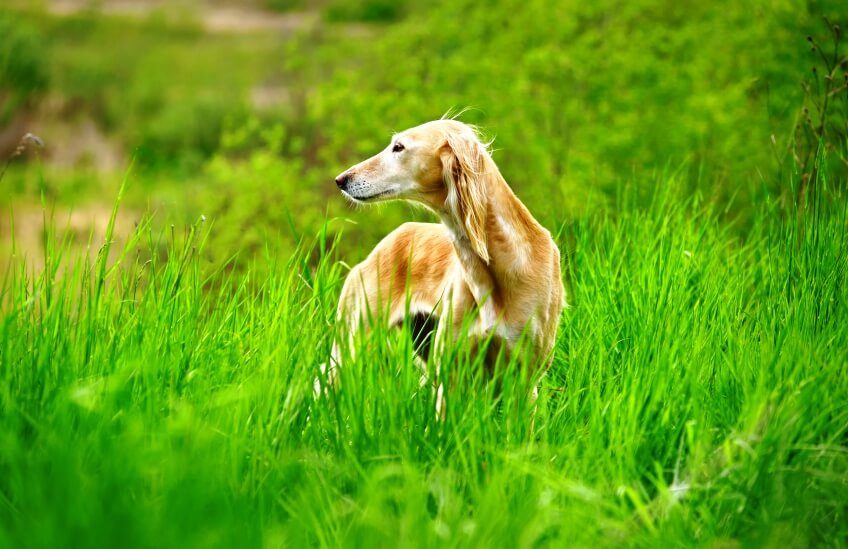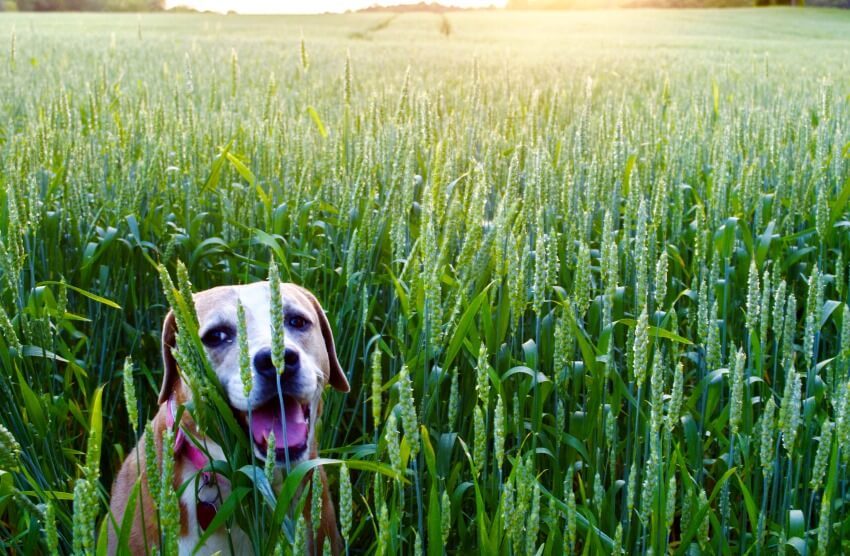Dog owners frequently worry about plants that may harm dogs, cats, and other pets. That is why knowing which plants are safe and dangerous for pets is crucial. Wheatgrass is one of the healthy foods that humans consume in their diet, usually in the form of microgreen juice or smoothie. But the question is: “Can dogs eat wheatgrass too? Is it beneficial for them?”
This question will be explored and fully addressed in this article.
What is Wheatgrass?
Wheatgrass is the young grass of the Triticum aestivum wheat plant. It is a gluten-free grass. Whenever someone talks about wheat, they immediately think of gluten. But gluten is not present in the grass itself. It is only present in the seed kernels of the wheat plant.
To learn more about wheatgrass,
read the <<Wheatgrass microgreens>> article.
Can dogs eat wheatgrass?
Yes, Dogs can indeed consume wheatgrass. Dogs and cats are safe to eat wheatgrass. wheatgrass is a nutrient-rich diet that can help your dog or cat in various ways. However, keep in mind that if served in excess amount, it may be dangerous for pets [1].
While wheatgrass might be healthy, it can also have the opposite effect. Even a healthy diet may have an unfavorable side effect if you are careless.
To prevent any digestive problems in dogs, it’s crucial to add wheatgrass to their diet gradually. Consult your veterinarian before making any dietary modifications for your dogs and before including wheatgrass in their regular diet.
Why wheatgrass for dogs?
Wheatgrass is a healthy and nutritious item to include in your dog’s diet. Chewing wheatgrass is a terrific way for dogs to clean their teeth and refresh their breath.
Dogs usually receive adequate flossing action by chewing on raw meaty bones, grass, and shrubs in the wild, but many commercial dog diets do not have the correct texture to aid in mouth cleaning.
These foods typically have the exact opposite effect. They may cause tooth decay by disintegrating or clinging to your dog’s teeth. Wheatgrass also offers some antibacterial properties, which may help your pet’s oral health routine.
Health benefits of wheatgrass for dogs
Wheatgrass can help your dog in the same way that it helps people digest food and increases blood purification. Like people, pets can experience constipation and upset tummies, and wheat grass can assist in easing these issues [2].
Some of the health benefits of wheatgrass for dogs are as below:
Body Odor Control
We are all aware that a dog’s breath can be unpleasant. Wheatgrass can help your dog’s teeth by removing tartar accumulation on dogs’ teeth. Additionally, dogs who consume wheat grass are likely to experience fewer skin problems and better body odor control.
Essential Vitamins
Many dog meals are deficient in vitamins, minerals, and other nutrients that dogs might need. High-quality wheatgrass is an excellent source of vitamins C, E, and K, as well as the B complex and minerals, including calcium, iron, protein and amino acids.
According to the United States Department of Agriculture (USDA), 350 pounds of veggies equal 15 pounds of wheat grass. You will not give your dog that much, of course!
Antioxidants
Antioxidants help the body eliminate toxins and fight the free radicals connected to diseases, including cancer, diabetes, heart disease, and other dangerous conditions. Additionally, some research claim that due to antioxidants present in wheatgrass, it has anti-cancer properties.
Low in Calories
Wheatgrass has few calories by nature, but it does not make you or your dog fat. According to USDA reports, only 25 calories are contained in one 8-gram spoonful of organic wheat grass powder.
Side effects of wheatgrass for dogs?
Despite the fact that wheatgrass is relatively safe for dogs, you should always consider your dog’s size and the recommended dosages into account.
A dog consuming excessive wheatgrass is likely to develop unpleasant side effects like indigestion, nausea, or vomiting [3].
Why do dogs eat lawn grass?
There are many reasons why your dog would eat the grass in the yard. Dogs occasionally chew grass to help induce vomiting when they realize something needs to be removed from their bodies. Sometimes they just do it out of boredom.
They usually consume grass if their diet is deficient in nutrients or enzymes, which can happen when they only consume processed food, which lacks the enzymes found in fresh foods [4].
There is nothing wrong with eating grass by dogs. However, many yards are treated with insecticides, weed killers, and chemical fertilizers. In addition, if it has been rainy and wet, your yard may potentially have deadly mushrooms too.
Giving your dog indoor-grown organic wheatgrass is a terrific method to satisfy their cravings and enable safe exercise of their natural instincts.
How to feed wheatgrass to dogs
Here are some safe methods to provide wheatgrass to your dogs:
Grow wheatgrass in a pot
Growing wheatgrass in a large pot can turn your dog’s cage into a miniature indoor garden (it also works beautifully for cats). Keep the pot close to your dog’s water and food bowls so that your dogs may assist themselves whenever they feel like it. The wheatgrass should keep growing so you will not have to continually replace it as long as you keep it trimmed, watered, and with access to sunlight.
Chop it
You may also clip some new grass off, chop it up, and add it to your dogs’ meals if they are not interested in chewing on it straight from the pot.
Juice it
Additionally, you can offer your dog wheatgrass juice. To prevent giving your dog too much juice, only add little wheatgrass juice to your dog’s water or food.













